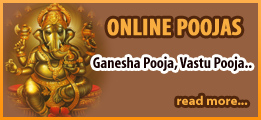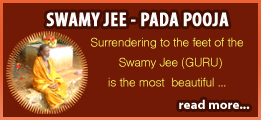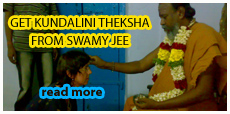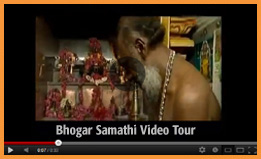
| FOLLOW US ON: | |||||||

HOME > Program/Classes > Pranayamam
PRANANAYAMA
Proper breathing profoundly improves our whole physical and mental well-being. The Breathe is intimately connected with our state of health and improper breathing will often reflect various disturbances of body and mind. The breath is perhaps the only physiological process that can be either voluntary or involuntary. One can breathe with awareness and control the breathing process consciously or one can breathe with awareness and control the breathing process consciously or one can ignore it and breathe reflexively or unconsciously. If the breath is unconscious, it falls under the control of primitive parts of the brain, where emotions, thoughts and feelings of which we have little or no awareness become involved. In this way the regularity and rhythms of the breath are disturbed and it flows in an uncoordinated way, creating havoc in the body and mind.
Pranayama is the yogic technique to bring the breathing in regularity, rhythmic and balanced. Lot of techniques is involved in pranayama. Generally, pranayama is defined as breath control. Although this interpretation may seem correct in view of the practices involved, it does not convey the full meaning of the term. The word pranayama is comprised of two roots: prana plus ayama. Prana means ‘vital energy’ or ‘life force’. It is the force, which exists in all things, whether animate or inanimate. Although closely related to the air we breathe, it is subtler than air or oxygen. There fore, pranayama should not be considered as mere Breathing exercises aimed at introducing extra oxygen into the lungs. P ran ayama utilizes Breathing to influence the flow of prana in the nadis or energy channels of the pranamaya kosha or energy body.
The word Ayama is defined as ‘extension’ or ‘expansion’, thus, the word pranayama means ‘extension or expansion of the dimension of prana’. The techniques of pranayama provide the method whereby the life force can be activated and regulated in order to go beyond one’s normal boundaries or limitations and attain a higher of vibratory energy.
FOUR ASPECTS OF PRANAYAMA
In the pranayama practices there are four important aspects of Breathing, there are:
- Poorka or Inhalation
- Rechaka or Exhalation
- Antar Kumbhaka or Retention of breath after Inhalation
- Bahir Kumbhaka or Retention of breath after Exhalation
The different practices of Pranayama involve various techniques, which utilise these four aspects of Breathing. There is another mode of Pranayama, which is called Kevala Kumbhaka or spontaneous Breathe retention. This is an advanced stage of Pranayama, which occurs during high states of meditation. During this state, the lungs stop their activity and the respiration ceases. At this time, the veil, which prevents one from seeing the subtle aspect of existence, is lifted and a higher vision of reality is attained.
The most important part of Pranayama is actually Kumbhaka or breath retention. However, in order to perform Kumbhaka successfully, there must be a gradual development of control over the function of respiration. Therefore, in the pranayama practices more emphasis is given to inhalation and exhalation at the beginning, in order to strengthen the lings and balance the nervous and pranic systems in preparation for the practice of kumbhaka. These practices influence the flow of prana in the nadis, purifying, regulating and activation them, thereby inducing physical and mental stability.
According to yogic physiology, the human framework is comprises of five bodies or sheaths, which account for the different aspects or dimensions of human existence. These five sheaths are known as:
1. Annamaya Kosha, the physical body
2. Pranamaya Kosha, the vital energy body
3. Manomaya Kosha, the mental body
4. Vijnanamaya Kosha, the intellectual body
5. Anandamaya Kosha, the bliss body
Although these five sheaths functions together to form an integral whole, the practices of Pranayama work mainly with Pranamaya Kosha. The panamaya Kosha is made up pf five major pranas which are collectively known as the pancha, prans, apana, samana, udana and uyana.
Prana in this context does not refer to cosmic prana but rather to just one part of the pranamaya kosha, governing the area between the larynx and the top of the diaphragm. It is associated with the organs of respiration and speech, and the gullet, together with the muscles and nerves that activate them. It is the force by which the Breathe is drawm inside.
Apana is located below the navel region and provides energy for the large intestine, kidneys, anus and genitals. It is concerned with the expulsion of waste from the body.
Samana is located between the heart and the navel. It activates and controls the digestive system: the liver, intestines, pancreas and stomach, and their secretions. Samana also activates the heart and circulatory system, and is responsible for the assimilation and distribution of nutrients.
Udana controls the area of the body above the neck, activating all the sensory receptors such as the eyes, nose and ears. Thought and consciousness of the outside world would be impossible without it. Udana also harmonies and activates the limbs and all their associated muscles, ligaments, nerves and joints as well as n=being responsible for the erect posture of the body.
Vyana pervades the whole body, regulating and controlling all movements and coordinating the other pranas. It acts as the reserve for the other pranas.
Along with the five major pranas there are five minor prana known as the upapranas. These five sub-pranas are Naga, Koorma, Krikara, Devadatta and Dhananjaya. Their functions are described as follows. Naga is responsible for belching. Koorma open the eyes and stimulate blinking. Krikara generates hunger, thirst, sneezing and coughing. Devadatta induces sleep and yawning. Dhananjaya lingers immediately after death and is responsible for decomposition of the body.
 |
 |
 |
 |
| SWAMY JEE INFO | SWAMY JEE PROGRAMS | KUNDALINI THEKSHA - SWAMY JEE | ASHRAM ADDRESS |
©
2012.Ssrimath Bhogar
|
||
| About Swamy Jee | Yoga Classes |  |
SRIMATH BHOGAR PALANI ATHEENAM, Pulippani Ashram, Adivaram. Palani - 624601. South India. Phone: +91 99942 16408, 78110 01166 E-mail: contact@siddharpulippanitradition.org |
|||
| Swamy Jee Books | Meditation Classes | |||||
| Swamy Jee TV interview | Spritual Camp | |||||
| Swamy Jee Video Gallery | Online Homam | |||||
| Swamy Jee Photo Gallery | Online Poojas | |||||


